Batangas is home to a wide variety of birds, from the majestic Philippine Eagle-Owl to the tiny sunbird. This province is a haven for bird watchers and enthusiasts alike, with its diverse habitats, including mangrove forests, lowland forests, and coastal areas.
With its warm climate and rich biodiversity, Batangas is an ideal spot to observe a variety of avian species, whether they’re endemic to the area or migratory species passing through.
Whether you’re a casual birdwatcher or a serious ornithologist, you won’t be disappointed by the variety of birds to be found in Batangas.
1. Philippine Duck
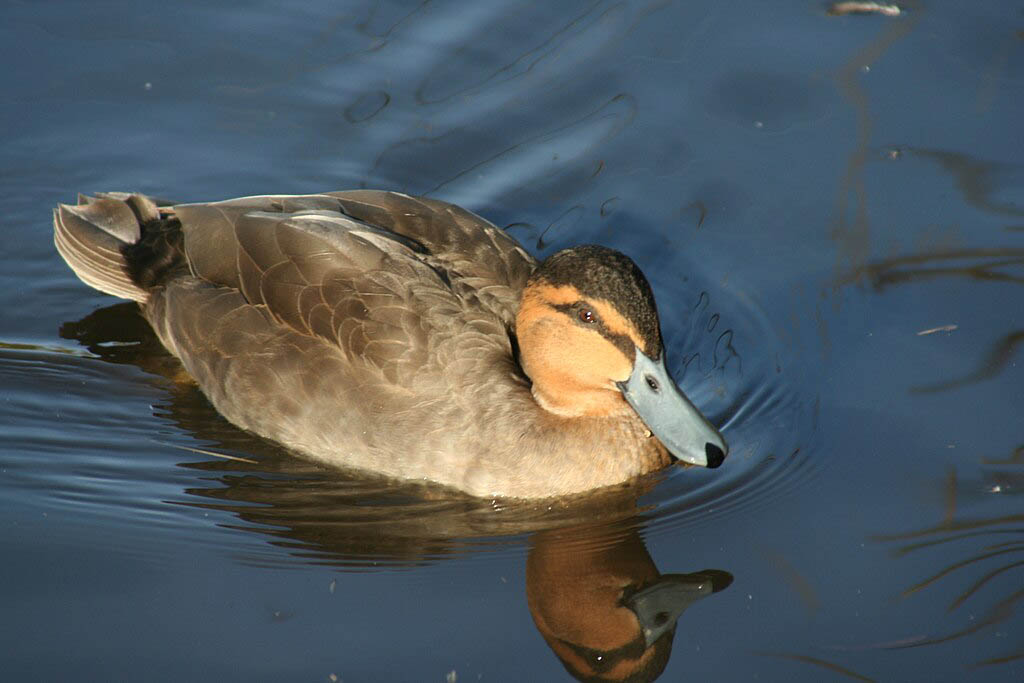
The Philippine duck is an impressive species of duck that is native to the Philippines. It belongs to the genus Anas and is commonly referred to as ‘papan’ in its native language. It is a large-sized dabbling duck, meaning it feeds mainly on the surface of the water.
This type of duck typically feeds on a wide variety of food sources such as shrimp, fish, insects, and vegetation.
It can be found in all types of wetland habitats such as marshes, lakes, rivers, and estuarine areas. The Philippine duck is a unique species that helps maintain the balance of its environment.
As a waterfowl, it helps to control the population of aquatic plants and animals, by feeding on aquatic vegetation, insects, and small fish. Its presence also helps to keep the water clean by filtering out organic and inorganic pollutants.
Additionally, the duck is an important source of food for other animals, providing a valuable source of nutrition. The Philippine duck is an important species for both its ecological and cultural importance.
It is an important part of the heritage of the Philippines and it is essential to the maintenance of the environment. The Philippine duck is a species that is worth preserving and protecting for its ecological and cultural importance.
| Kingdom | Animalia |
| Phylum | Chordata |
| Class | Aves |
| Order | Anseriformes |
| Family | Anatidae |
| Genus | Anas |
| Species | A. luzonica |
2. Pink-Necked Green Pigeon
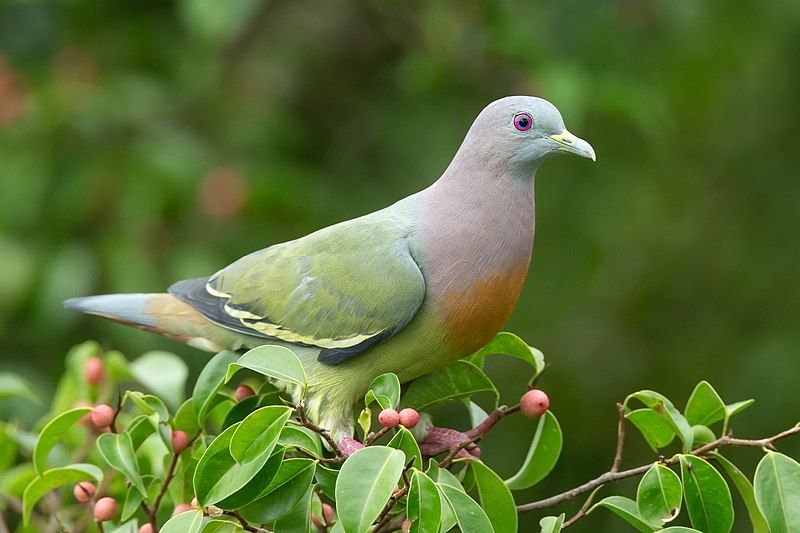
The pink-necked green pigeon is a species of bird from the Columbidae family, which contains all pigeons and doves.
It can be found commonly in Southeast Asia, from Myanmar and Vietnam in the north, all the way down to the major islands of Indonesia and the Philippines in the south. This species of pigeon is mostly green in color, with a prominent pink neck, making it easily identifiable.
It is a fairly small bird, usually between 11-12 inches long, with a wingspan of around 18 inches. The pink-necked green pigeon is a mainly ground-dwelling species, preferring to live in forests and woodlands, although they can also be seen in more open habitats.
They are known to feed on a variety of fruits, seeds, and invertebrates. They are often seen in pairs or small groups and are known to be quite vocal, with a soft, cooing call.
Breeding season usually takes place from March to July, with a single egg laid in a nest of twigs and leaves. Overall, the pink-necked green pigeon is a fairly common species in Southeast Asia and can be seen in a variety of different habitats.
It is a beautiful bird, with its bright green plumage and distinctive pink neck, and is sure to be a delight for birdwatchers.
| Kingdom | Animalia |
| Phylum | Chordata |
| Class | Aves |
| Order | Columbiformes |
| Family | Columbidae |
| Genus | Treron |
| Species | T. vernans |
3. Zebra Dove
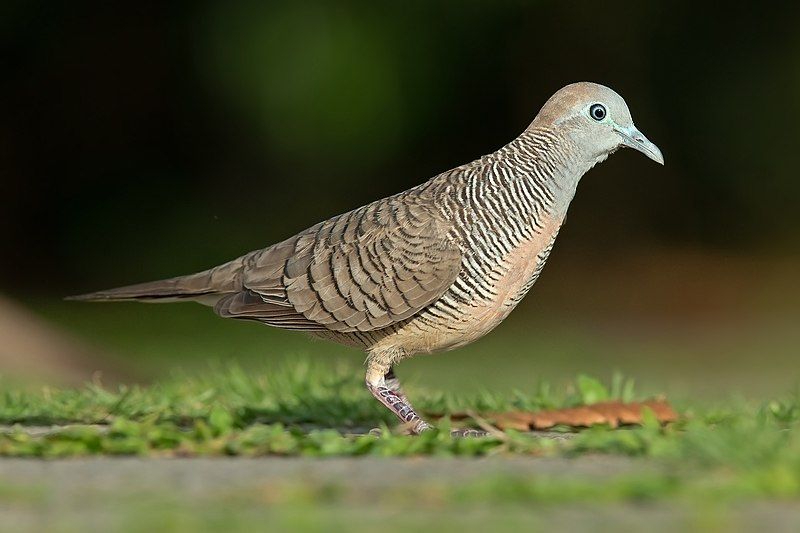
The zebra dove is a species of bird belonging to the Columbidae family, which is native to Southeast Asia. It is a small bird, usually around 20 cm in length, with a long tail.
The bird has a predominantly brownish-grey colour with black-and-white barring, hence its alternative names, barred ground dove and barred dove. Zebra doves are found in open grasslands, woodlands, and other areas with sparse vegetation.
They favor dry habitats, but can also be found in moist habitats such as swamps and marshes. Their diet consists of seeds, fruits, small invertebrates, and nectar.
They are social birds, often seen in small flocks, and are known for their distinctive call which is a loud, repetitive “coo-coo-coo” sound. The zebra dove is an important species in Southeast Asia, both culturally and economically.
It is often kept as a pet, hunted for food, and used in traditional medicine. It is also a popular bird in aviculture, as its striking colors and easy-going temperament make it an ideal pet.
The species is not considered threatened, but its population is declining due to habitat loss and illegal hunting.
It is therefore important that we protect the remaining populations of this species so that future generations can enjoy its beauty and benefit from its importance to the region.
| Kingdom | Animalia |
| Phylum | Chordata |
| Class | Aves |
| Order | Columbiformes |
| Family | Columbidae |
| Genus | Geopelia |
| Species | G. striata |
4. Philippine Megapode
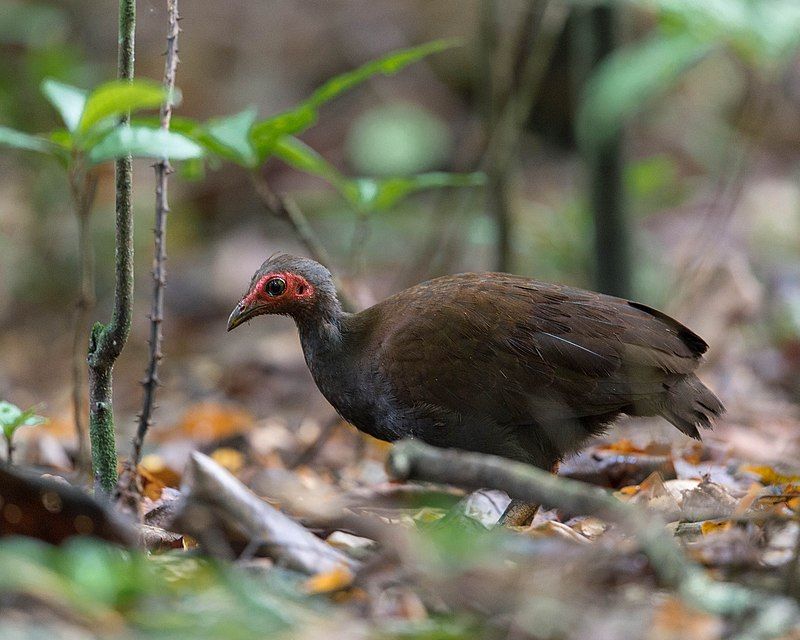
The Philippine megapode is a species of bird belonging to the family Megapodiidae and is also referred to as the Philippine scrubfowl or the Tabon scrubfowl. This species of bird can be found in three different locations – the Philippines, northeastern Borneo, and Sulawesi.
It is an endemic species, meaning that it cannot be found anywhere else in the world. The Philippine megapode is a medium-sized bird, measuring between 40 and 45 cm in length and weighing up to 600 grams.
It has a distinctive red face and throat, a brown-black back and wings, and a buff-white belly.
The Philippine megapode is mainly terrestrial, spending most of its time on the ground, but it is also a capable flier, and can often be seen flying from one tree to another. The Philippine megapode is a monogamous species, with pairs typically staying together for life.
It builds a large mound nest, which it shares with its mate, in which to lay its eggs. The nest is usually constructed from leaves, grass, and soil.
The eggs are then incubated by the heat generated from the decomposing matter in the mound. The Philippine megapode is an omnivorous species, and its diet consists of fruits, seeds, small insects, and other invertebrates.
It typically forages in pairs, searching for food on the ground. The Philippine megapode is listed as Vulnerable by the IUCN and is threatened by habitat destruction, hunting, and the use of pesticides.
Conservation efforts are in place to protect this species and its habitat, including creating protected areas in the Philippines and Sulawesi.
| Kingdom | Animalia |
| Phylum | Chordata |
| Class | Aves |
| Order | Galliformes |
| Family | Megapodiidae |
| Genus | Megapodius |
| Species | M. cumingii |
5. Wandering Whistling Duck
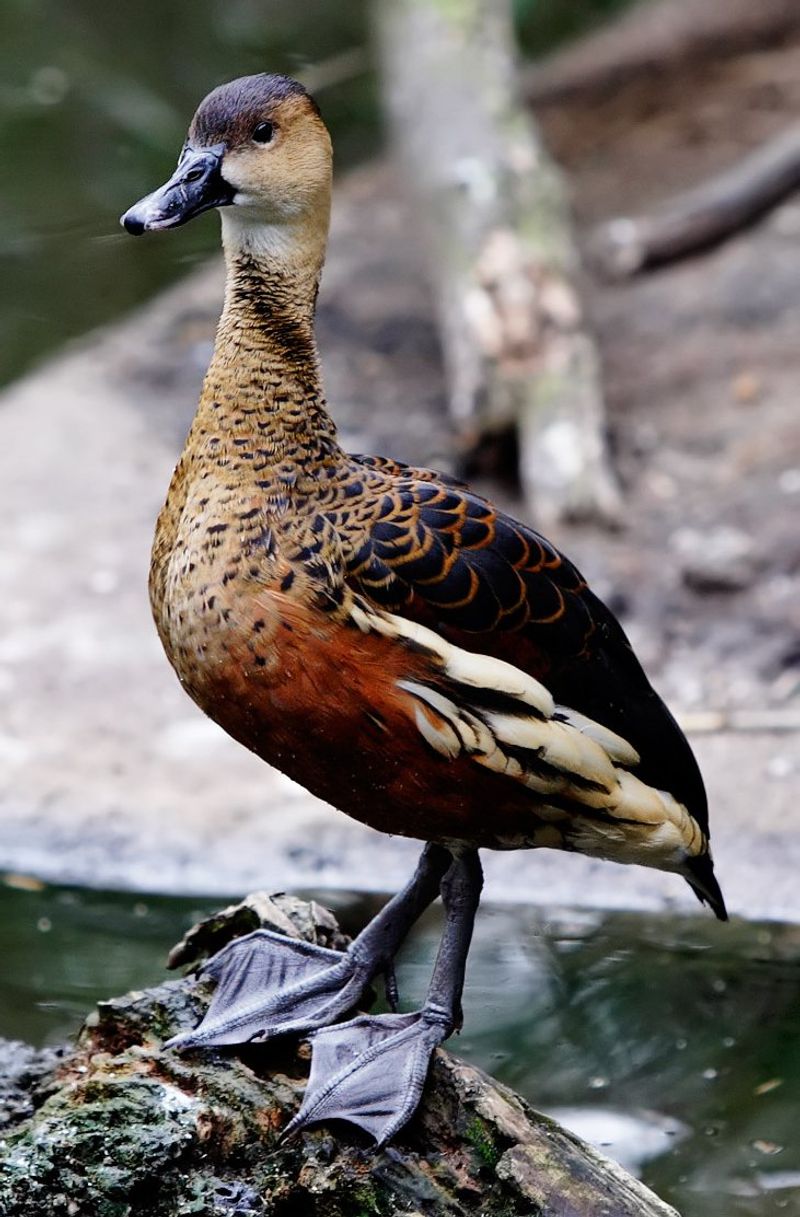
The Wandering Whistling Duck is an interesting species of duck that has a unique name due to its whistling call. This species is native to tropical and subtropical areas of Australia, the Philippines, Borneo, Indonesia, Papua New Guinea, and the Pacific Islands.
This species is migratory in nature, and its range covers vast distances. The Wandering Whistling Duck has a long, thin neck, and its body is a reddish-brown color. Its wings are broad and its tail is short. It has a white patch on its head and a black stripe on its back.
The bill is long and pointed. Its legs are thin and long, and its feet are webbed. The Wandering Whistling Duck is a social animal and often forms large flocks. It feeds on small aquatic invertebrates and plant material, which it obtains by dabbling at the surface of the water.
It is known to consume some grains and seeds. The Wandering Whistling Duck is a monogamous species, and its breeding season occurs during the summer months. The female will lay up to eight eggs at a time in a nest that is typically located on the ground, or in a hollow tree.
The female will incubate the eggs for twenty-eight days before they hatch. The chicks are cared for by both parents, and they are able to fly after about fifty days. The Wandering Whistling Duck is an important species in its native ranges.
It provides food, feathers, and other resources to local people. It is also a valuable part of the ecosystem, helping to keep insect populations in check. Unfortunately, the species is threatened by habitat loss and hunting.
Conservation efforts are necessary to help protect this species and ensure its future.
| Kingdom | Animalia |
| Phylum | Chordata |
| Class | Aves |
| Order | Anseriformes |
| Family | Anatidae |
| Genus | Dendrocygna |
| Species | D. arcuata |
6. Philippine Cuckoo-Dove
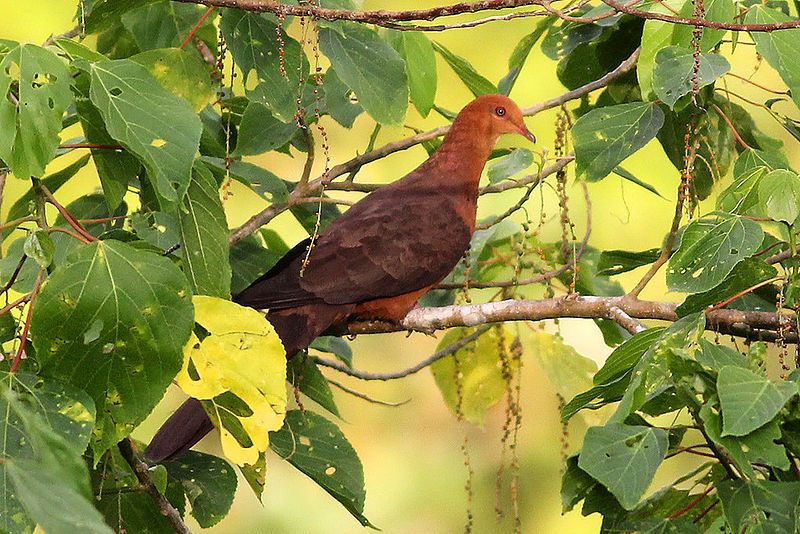
The Philippine cuckoo-dove is a species of bird that belongs to the family Columbidae. It is native to the Philippines and Taiwan and is considered to be a species of least concern on the International Union for Conservation of Nature Red List of Endangered Species.
This means that the birds are not currently in danger of extinction, although they are still vulnerable to changes in their environment and human activity. The Philippine cuckoo-dove can be found in a variety of habitats, including forests, grasslands, and shrublands.
They are small-medium-sized birds, typically measuring around 25 cm in length and weighing between 85 and 95 grams. They have a distinctive call that sounds like a loud “coo-coo” and they can be identified by their greyish brown plumage, white-tipped tail, and red eyes.
The diet of the Philippine cuckoo-dove consists mainly of fruits, seeds, and small insects. They are also known to feed on nectar from flowers. They are monogamous breeders, typically nesting in trees or bushes where they lay a single egg.
The chicks hatch after about two weeks and fledge after another two weeks. The population of the Philippine cuckoo-dove is currently stable, although it is vulnerable to changes in its environment due to urban development and intensive farming practices.
Conservation efforts, such as habitat protection, are necessary to ensure that this species remains safe from extinction.
| Kingdom | Animalia |
| Phylum | Chordata |
| Class | Aves |
| Order | Columbiformes |
| Family | Columbidae |
| Genus | Macropygia |
| Species | M. tenuirostris |
7. White-Eared Brown Dove
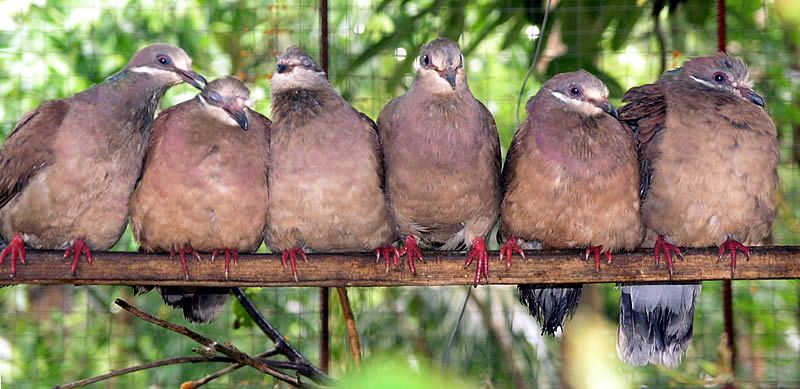
The white-eared brown dove is a species of bird that is part of the Columbidae family. This particular bird species is only found in the Philippines, meaning that it isn’t found anywhere else in the world. The dove is known for its distinctive white ear patch on its brown body.
This species of bird has adapted to the environment of the Philippines, making it highly specialized and unique to the region. It is an important part of the local ecosystem and helps to keep it in balance.
The white-eared brown dove has been studied by researchers in order to better understand its biology and behavior. This research is important so that conservation efforts can be put in place in order to ensure its continued survival and well-being.
| Kingdom | Animalia |
| Phylum | Chordata |
| Class | Aves |
| Order | Columbiformes |
| Family | Columbidae |
| Genus | Phapitreron |
| Species | P. leucotis |
8. Philippine Nightjar
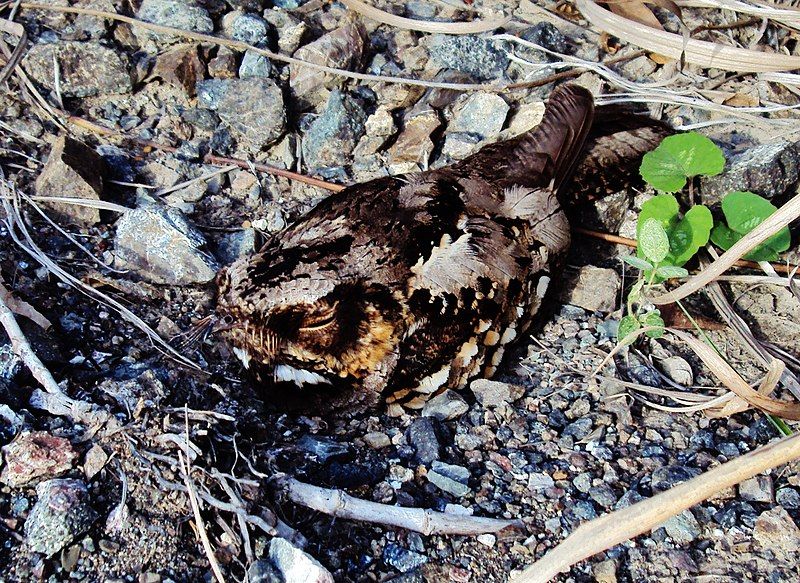
The Philippine nightjar is a species of nightjar, which is a type of nocturnal bird found in the family Caprimulgidae. It is native to the Philippines, and is known by two local names: “kandarapa” and “tagolilong”.
Its natural habitats can be found in tropical and subtropical regions, such as lowland forests, mangrove forests, and moist montane forests. These areas are typically humid and full of vegetation, making them perfect places for the Philippine nightjar to nest and hunt for food.
The nightjar can be found hunting insects, such as moths and beetles, at night. The Philippine nightjar is an important bird to the Philippines, both culturally and ecologically.
It is an indicator species, meaning it is a species that is used to measure the health of its environment, and its presence is an indicator of a healthy, thriving ecosystem.
Additionally, it is featured in local folklore and has been adopted as a symbol of the Philippines’ natural heritage.
Overall, the Philippine nightjar is an important species to the Philippines, both as an indicator of environmental health and as a symbol of the country’s natural heritage.
By protecting the nightjar’s habitats and respecting its natural behavior, the Philippines can preserve this species for generations to come.
| Kingdom | Animalia |
| Phylum | Chordata |
| Class | Aves |
| Clade | Strisores |
| Order | Caprimulgiformes |
| Family | Caprimulgidae |
| Genus | Caprimulgus |
| Species | C. manillensis |
9. Savanna Nightjar
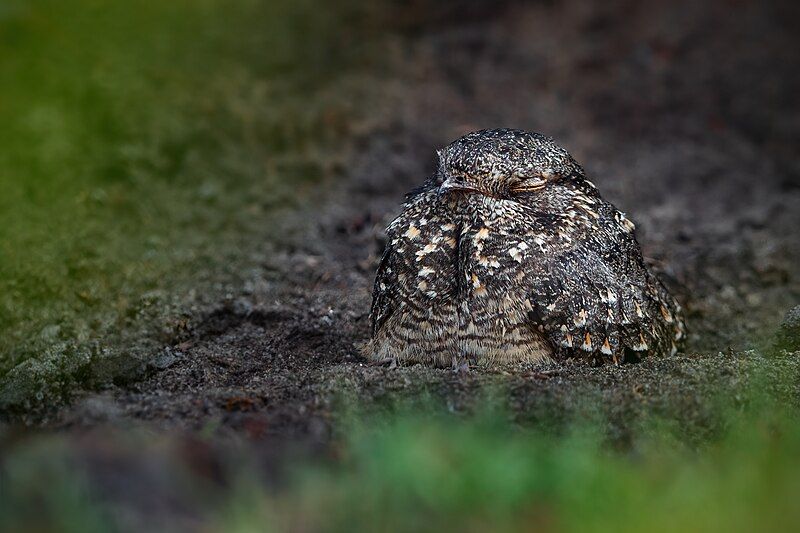
The Savanna nightjar, also known as the Allied nightjar or Franklin’s nightjar, is a species of nightjar which is native to parts of South and Southeast Asia. There are six recognized subspecies of this species, which are C. a. monticolus, C. a. amoyensis, C. a. stictomus, C. a.
affinis, C. a. timorensis and C. a. propinquus. These subspecies can be found in various parts of the region, and each has its own unique characteristics. For example, C. a.
monticolus is found in parts of India and Sri Lanka and often has a darker plumage with a darker crown and a white throat. C. a. amoyensis is found in parts of China and is known for its distinctive red eye. C. a.
stictomus is found in parts of Burma and Thailand and has a unique combination of a white throat and a grey crown. C. a. affinis is found in parts of Indonesia and is known for its unique white forehead. C. a.
timorensis is found in parts of Indonesia and East Timor and has a unique combination of a white throat and a grey crown. Finally, C. a. propinquus is found in parts of Malaysia and is known for its distinctive yellowish-brown colour.
These subspecies all have unique characteristics that make them distinct from one another. They all have different plumage colours, as well as different markings on their throats and crowns. This helps to distinguish them from other nightjar species.
All of these subspecies help to make the Savanna nightjar a unique and interesting species, and one that is worth appreciating.
| Kingdom | Animalia |
| Phylum | Chordata |
| Class | Aves |
| Clade | Strisores |
| Order | Caprimulgiformes |
| Family | Caprimulgidae |
| Genus | Caprimulgus |
| Species | C. affinis |
10. Slaty-Legged Crake
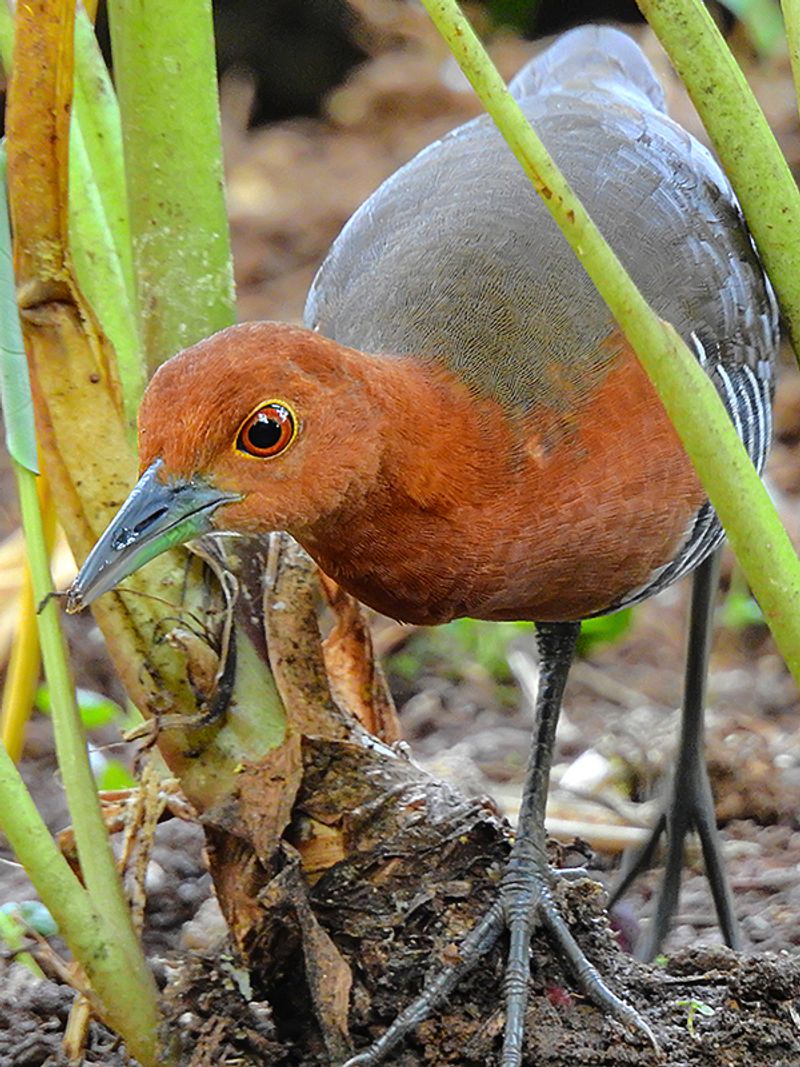
The slaty-legged crake, also known as the banded crake, is a species of waterbird that belongs to the Rallidae family. It is a member of the rail and crake family, which is a group of mostly secretive birds that inhabit wetlands.
These birds are usually seen swimming about in shallow, marshy water, foraging for food. The slaty-legged crake is a medium-sized bird, measuring from 30 to 35 centimeters in length.
It has a distinctive black and white barred pattern on its chest and back, and a grey face with a white throat. Its legs are a slate-blue color, hence its name. The slaty-legged crake is native to much of Southeast Asia, from India to China, and is a fairly common species.
It is usually seen in grasslands and wetlands, though it can also be found near rivers, ponds, and marshes. The slaty-legged crake is an omnivorous species, feeding on a variety of aquatic invertebrates, crustaceans, frogs, and small fish.
It also feeds on small seeds, fruits, and grains. This species is an important part of the wetland ecosystem, as it helps to keep the populations of its prey species in check and thus helps to maintain a balanced wetland environment.
| Kingdom | Animalia |
| Phylum | Chordata |
| Class | Aves |
| Order | Gruiformes |
| Family | Rallidae |
| Genus | Rallina |
| Species | R. eurizonoides |
11. Philippine Coucal
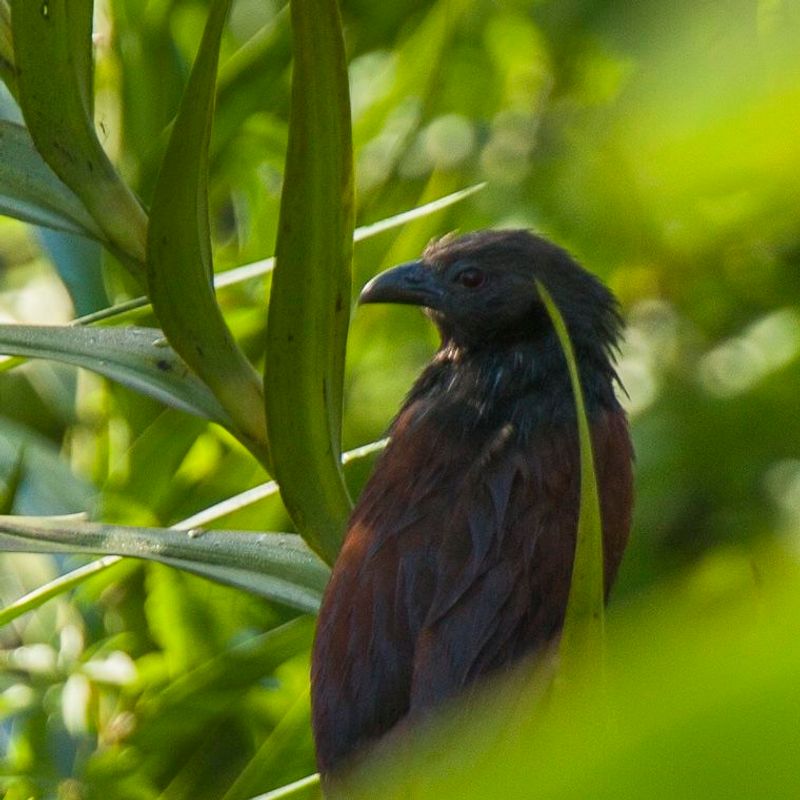
The Philippine coucal is a species of bird found only in the Philippines. It belongs to the cuckoo family, Cuculidae, which is a group of birds known for laying eggs in the nests of other birds.
This species of bird is native to the Philippines, meaning it is not found anywhere else in the world. Because of this, the Philippine coucal is an important part of the country’s biodiversity and is one of the unique wildlife species found there.
The Philippine coucal has a black body and wings, with white and brown stripes on the wings, and a white-tipped tail. It has a distinctive call which is often heard in tropical forests.
The Philippine coucal is mainly active during the day and feeds on insects, small reptiles, and fruits. Due to human activities such as deforestation, the population of this species has been declining in recent years.
Conservation efforts are necessary to protect this species and to ensure its survival for future generations.
| Kingdom | Animalia |
| Phylum | Chordata |
| Class | Aves |
| Order | Cuculiformes |
| Family | Cuculidae |
| Genus | Centropus |
| Species | C. viridis |
12. Philippine Hawk-Cuckoo
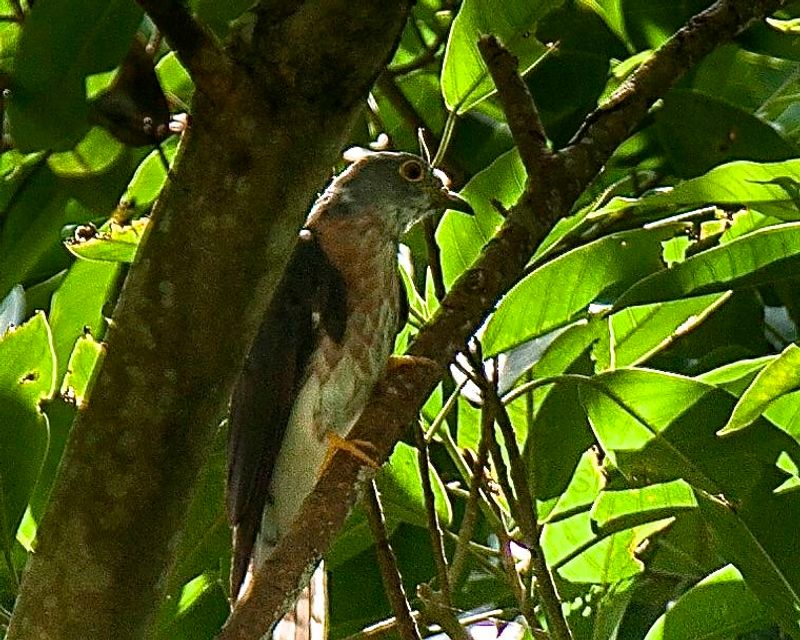
The Philippine hawk-cuckoo is a species of bird that belongs to the cuckoo family. It is found exclusively in the Philippines and is not found anywhere else in the world.
It was originally classified as a subspecies of Hodgson’s hawk-cuckoo, based on its similar physical characteristics. However, further research has revealed differences in its vocalizations, which has led to the Philippine hawk-cuckoo being treated as a separate species.
The bird is known for its distinctive call, which is a loud, ringing “cuck-coo” that is heard throughout the day. The Philippine hawk-cuckoo is also known for its distinctive appearance, with a black head, a white eye ring, and a chestnut-brown back.
Due to its restricted range, the bird is considered to be vulnerable to extinction. Therefore, conservation efforts are necessary to ensure that the species remains viable.
| Kingdom | Animalia |
| Phylum | Chordata |
| Class | Aves |
| Order | Cuculiformes |
| Family | Cuculidae |
| Genus | Hierococcyx |
| Species | H. pectoralis |
13. Plain Bush-Hen
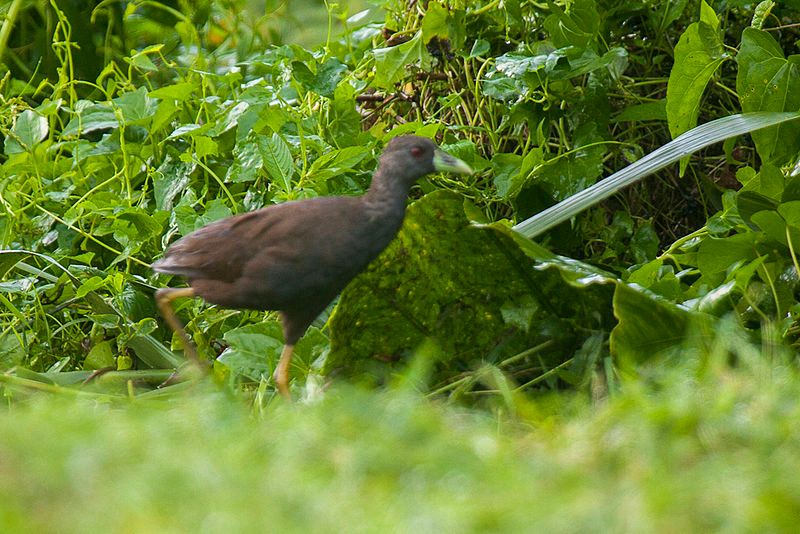
The plain bush-hen is a species of bird that belongs to the Rallidae family. This species of bird is only found in the Philippines, meaning that it is endemic to the country.
The plain bush-hen is a small bird with a brownish-gray plumage, which helps it to blend in with its surroundings. Its diet consists mainly of insects, small reptiles, and fruits. It is a ground dweller and can often be found in grassy areas or near bodies of water.
The plain bush-hen is a shy and skittish creature, so it can be difficult to spot in the wild. Despite this, it is an important species to the Philippines as it helps to keep the insect population in check.
Additionally, it is an important species to the ecosystem and its conservation is important to the preservation of the island’s biodiversity.
| Kingdom | Animalia |
| Phylum | Chordata |
| Class | Aves |
| Order | Gruiformes |
| Family | Rallidae |
| Genus | Amaurornis |
| Species | A. olivacea |
14. Asian Palm Swift
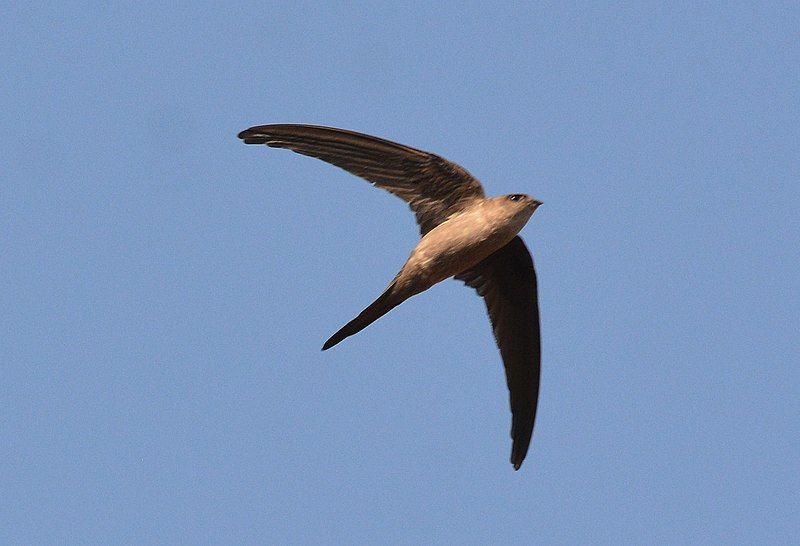
The Asian palm swift is a small species of swift and is closely related to the African palm swift, Cypsiurus parvus. In the past, it was thought to be the same species as the African palm swift but is now recognized as a distinct species.
The Asian palm swift is a common bird in many parts of tropical Asia, ranging from India to the Philippines. It is a resident breeder, meaning it typically does not migrate and stays in the same area all year round.
The Asian palm swift prefers to inhabit areas near water, such as marshes, rivers, and mangrove forests, where it can find plenty of insects to feed on. The swift builds its nest on the underside of large leaves in trees.
It is a common sight in many of these areas, flying around in large flocks, often making a loud chattering sound.
| Kingdom | Animalia |
| Phylum | Chordata |
| Class | Aves |
| Clade | Strisores |
| Order | Apodiformes |
| Family | Apodidae |
| Genus | Cypsiurus |
| Species | C. balasiensis |
15. Ruddy-Breasted Crake
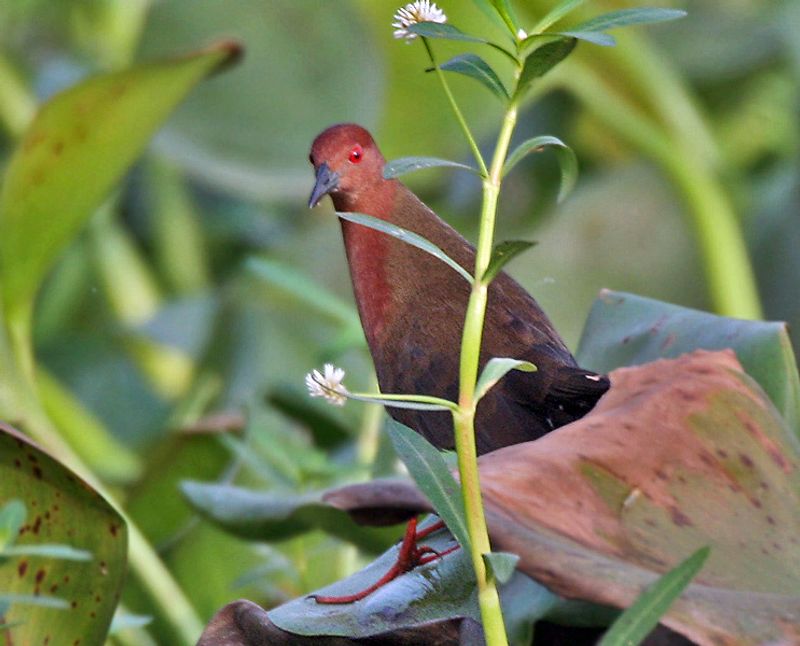
The ruddy-breasted crake, also known as the ruddy crake, is a species of waterbird in the rail and crake family Rallidae. It is a medium-sized bird with a ruddy-colored breast and is predominantly found in wet areas such as swamps.
Its breeding habitat is spread across South Asia, ranging from the Indian subcontinent to East Asia, including countries such as China, Japan, and Indonesia. The ruddy-breasted crake has adapted to a wide range of wet habitats, from marshes and swamps to flooded grasslands and even paddy fields.
It feeds mostly on small invertebrates such as snails, insects, and worms, which it forages for in mud and shallow water.
The bird has a distinctive call, which is a low-pitched ‘tuk-tuk-tuk’ sound. The ruddy-breasted crake is a seasonally monogamous species, with pairs forming during the breeding season.
Its nest is usually built close to the ground, in a location with dense vegetation to provide cover. The female lays two or three eggs, which she incubates for about two weeks.
The chicks are then cared for by both parents until they are ready to leave the nest. The ruddy-breasted crake is widely distributed across its range, but its population is threatened by habitat destruction and degradation.
As a result, it is classified as a species of least concern by the International Union for Conservation of Nature (IUCN). Conservation efforts are focused on preserving and restoring suitable wetland habitats for this species.
| Kingdom | Animalia |
| Phylum | Chordata |
| Class | Aves |
| Order | Gruiformes |
| Family | Rallidae |
| Genus | Zapornia |
| Species | Z. fusca |
16. White-Breasted Waterhen
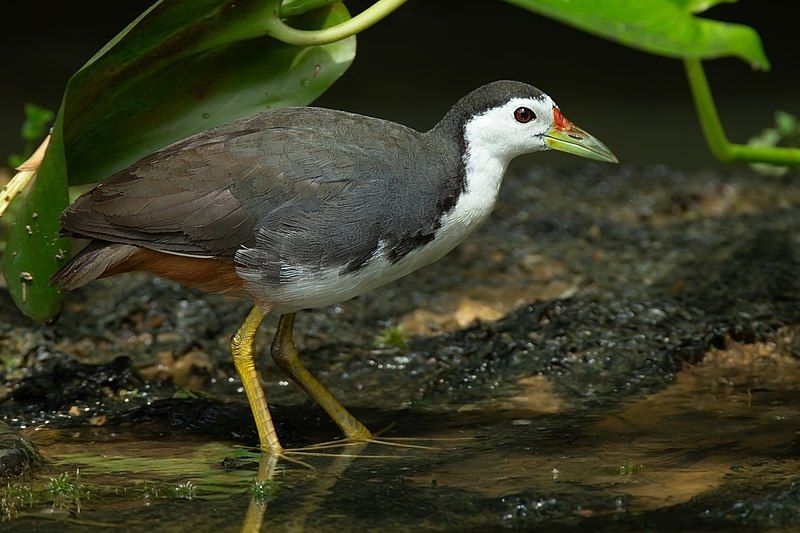
The white-breasted waterhen is a waterbird belonging to the Rallidae family, which is found in various parts of South and Southeast Asia. It is a medium-sized bird, with a dark slaty coloration for its feathers.
The most distinguishing feature of the bird is its white face, breast and belly, which stands out in stark contrast against the dark feathers. In terms of habitat, the white-breasted waterhen is found in wetlands, pools, marshes, and the banks of rivers and lakes.
They feed mainly on aquatic insects, small fish, and other invertebrates. They can also be seen scavenging for food in agricultural areas and in nearby fields. The white-breasted waterhen is a social bird, usually found in groups of up to 10 individuals.
They are also known to form large flocks during migration or when food is scarce. They are known to be vocal, with a variety of calls and songs. The white-breasted waterhen is an important species, as it helps to keep a balance in the aquatic ecosystem.
Its presence helps in controlling the population of aquatic insects and other invertebrates, as well as maintaining the health of the wetland habitats. As such, it is important to protect and conserve this species, as well as its habitats.
| Kingdom | Animalia |
| Phylum | Chordata |
| Class | Aves |
| Order | Gruiformes |
| Family | Rallidae |
| Genus | Amaurornis |
| Species | A. phoenicurus |
17. Lesser Frigatebird
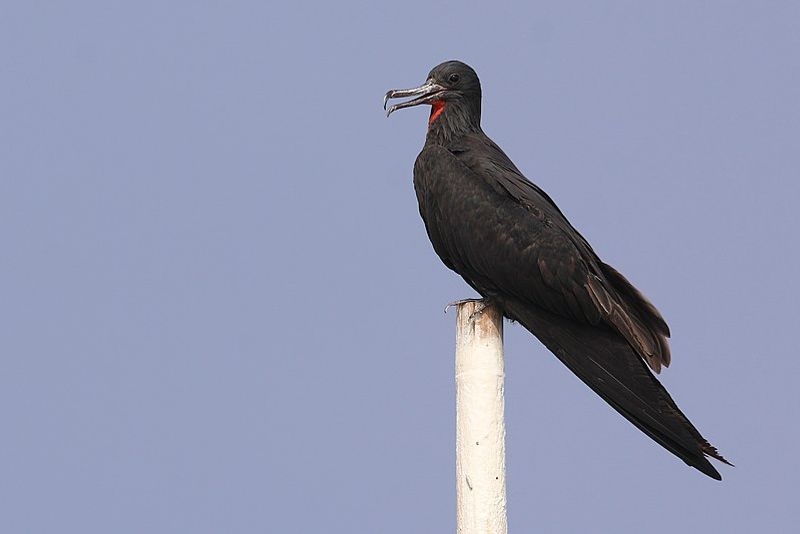
The lesser frigatebird is a seabird from the Fregatidae family and is the smallest of the frigatebird species. It grows to around 75 cm in length.
It is found in tropical and subtropical waters across the Indian and Pacific Oceans, as well as off the Atlantic coast of Brazil. The lesser frigatebird is a magnificent creature, with black feathers, and a red throat patch.
The red throat patch is used to attract mates, and is inflated during courtship displays. It also has long, pointed wings, which help it soar through the skies.
It is a strong flyer and can cover great distances in search of food. The diet of the lesser frigatebird consists of small fish, squid, and crustaceans. It is a highly sociable bird, often seen in flocks of up to 500 individuals.
It nests on rocky coasts, and on islands. The lesser frigatebird is mainly threatened by habitat loss and human disturbance. It is classified as near-threatened on the IUCN Red List.
This means that it is likely to become endangered in the near future unless conservation efforts are made to protect its habitat.
| Kingdom | Animalia |
| Phylum | Chordata |
| Class | Aves |
| Order | Suliformes |
| Family | Fregatidae |
| Genus | Fregata |
| Species | F. ariel |
18. Striated Heron
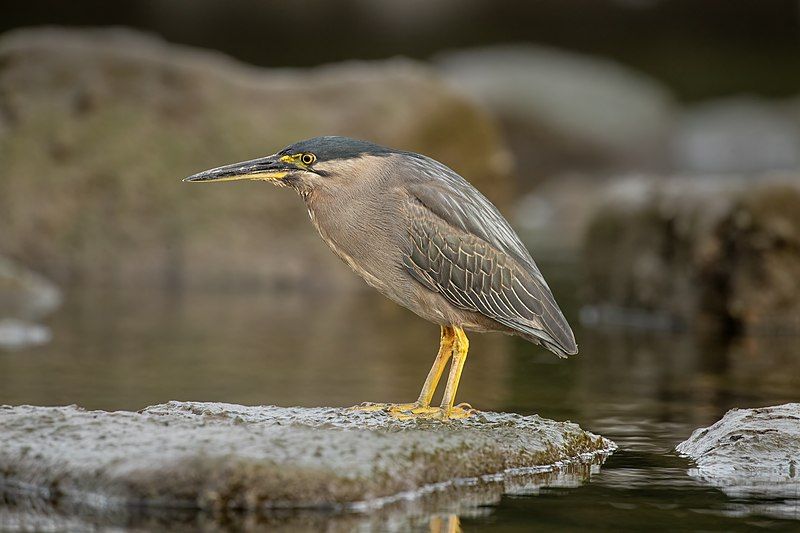
The Striated Heron is a small heron, measuring around 44 cm in height. It is also known by other names such as Mangrove Heron, Little Green Heron, and Green-Backed Heron. This species of heron is mostly sedentary, meaning it does not migrate to other regions.
It is also known for its interesting and unique behavior. For example, they have been observed using their wings as a shield or umbrella when searching for food during the rain. They have also been known to use twigs or leaves to attract prey.
This behavior is believed to be learned, rather than instinctual. The Striated Heron is also an opportunistic feeder, which means it will take advantage of whatever food sources are available.
With its distinctive coloration and interesting behavior, the Striated Heron is a great addition to any bird-watching experience.
| Kingdom | Animalia |
| Phylum | Chordata |
| Class | Aves |
| Order | Pelecaniformes |
| Family | Ardeidae |
| Genus | Butorides |
| Species | B. striata |
Conclusion
Birds in Batangas are a great asset to the province, providing valuable food sources, habitat, and aesthetic beauty. They can be found in various habitats, from lowland forests to coastal wetlands, and they provide a variety of important ecological services.
The diversity of bird species in Batangas is impressive, and the variety of habitats provides opportunities for bird watching and nature appreciation.
It is important to remember that our actions can have a direct impact on bird populations and that we should strive to protect and conserve them.